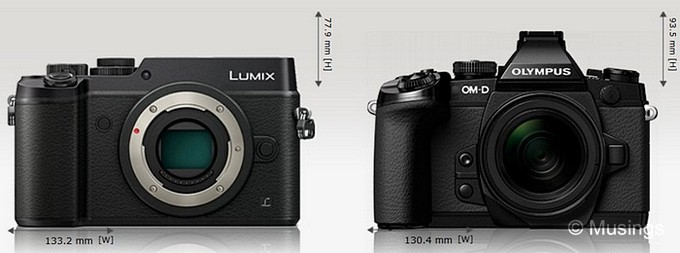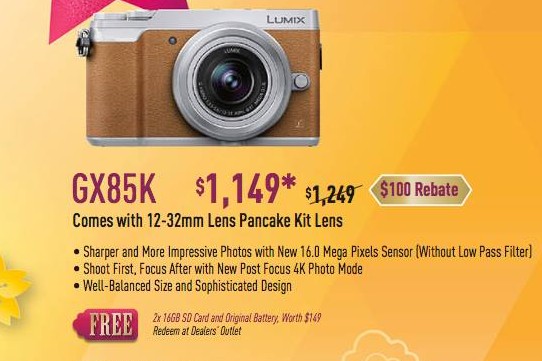Mention Panasonic, and one would immediately think of the electronics giant whose refrigerators, TVs, laundry machines and all manner of household appliances line electronic stores like Courts, Harvey Norman and Best Denki here. The Japanese company though is as widely regarded by photographers as one of the main manufacturers of cameras and lenses.
I’ve owned a couple of Panasonic cameras now – including the compact LX7 that was used to take several of the wide-angled and panoramic shots of The Minton while it was still in construction, and also more recently the LX100. The four year old LX7 is still going on great and was recently used by Ling to take several hundred pictures of Malay clothes tailored made by mom-in-law. The LX100 used a m4/3 sized sensor and was wonderfully featured, but the lack of overall sharpness and especially softness in the corners when shot wide was a real bother.
Like Olympus and possibly even more so, Panasonic has been quite illustrious in continually releasing new and improved camera bodies and lenses. In fact, they’ve got as many as four distinct lines which in the m4/3 system, all with fairly recent updated models: the GF9 at entry level, the DSLR-styled G85, the video-centric, top of the line GH5, and two rangefinder-styled mid-priced entries: the GX8 and GX85. Of these: the GF9 is very compact, attractive styling, a tilt up/down screen for wefies, but does not offer sensor stabilization which I need as the majority of my m4/3 lenses are Olympus which are typically not optically stabilized. I wasn’t interested in another DSLR-styled (G85) camera – the E-M1/M5 combo is still my go-to when I have to do event photography at work – and the similarly styled GH5 is extremely expensive. Finally, the GX8 is over-sized.


The GX85 is regarded as the younger and cheaper sibling of the GX8 from a pricing point of view at least, but the GX85 offers a number of newer and really useful features on top of the GX8, largely on account of it being released about a year later. The GX85 has been receiving a lot of praise, as it essentially offers a state of the art camera, jam-packed with technological achievements, and at USD799. Panasonic Singapore carries this model, and it’s recommended retail price is SGD1149 – fairly close to the USD equivalent. Not surprisingly, that Singapore RRP didn’t drop when large retail stores like Amazon dropped that attractive price even lower to USD699 just before the year ended. This price-point would really make Olympus sweat, since it’s only marginally more than the USD649 the Olympus E-PL8 commands, but the E-PL8 isn’t nearly as feature-packed as the GX85. It misses an EVF, support for 4K video modes, built-in flash, 3 instead of 5 axis stabilization, and overall build quality doesn’t feel as premium as the GX85.

So, when I did find a brick and mortar store here which was selling it for lower than the RRP at SGD929 – which at USD663 is substantially cheaper than even Amazon – I didn’t hesitate. I did think whether to just get the body sans 12-32mm kit lens, but while I’ve got plenty of kit lenses in the 12/14mm to 40mm-ish range, the general consensus is that the Panasonic’s 12-32mm pancake isn’t too shabby, and it can be separately sold away if necessary later. And the bundle even includes a couple of extras: a couple of Sandisk 16GB cards that are slow for my needs, and a very useful extra OEM battery.
Next post on my first impressions of the GX85 and first handling!
Recent comments